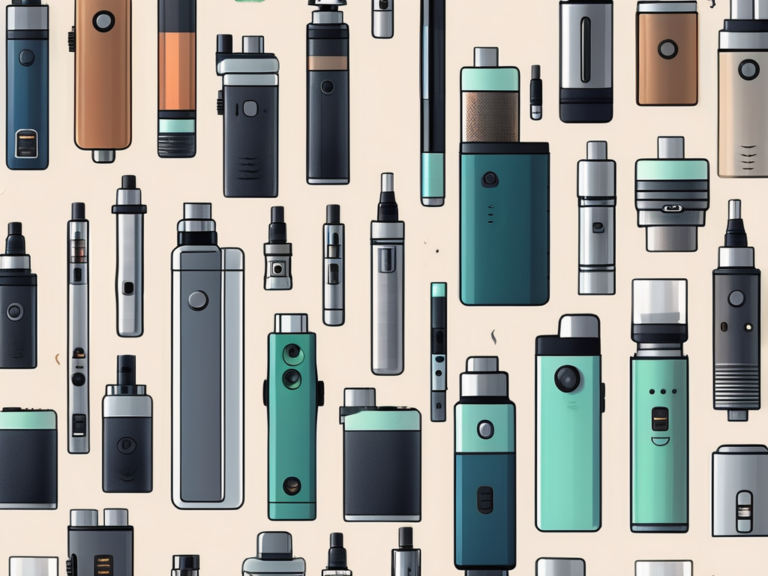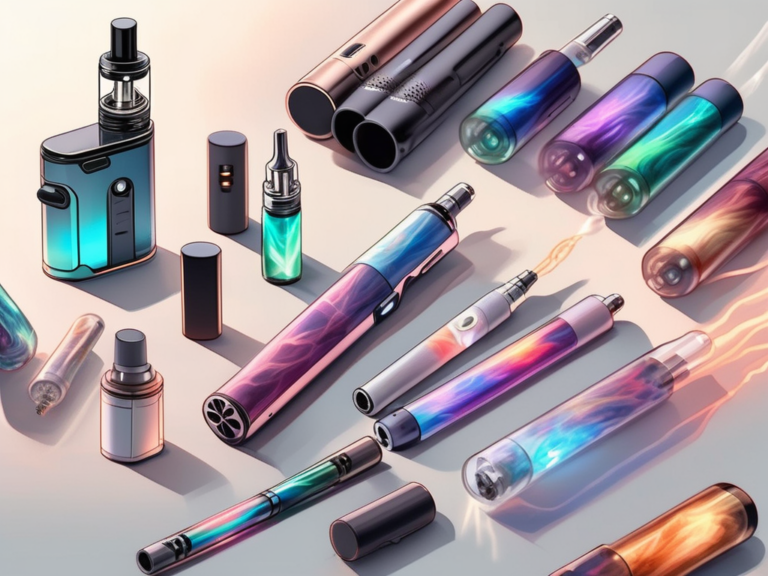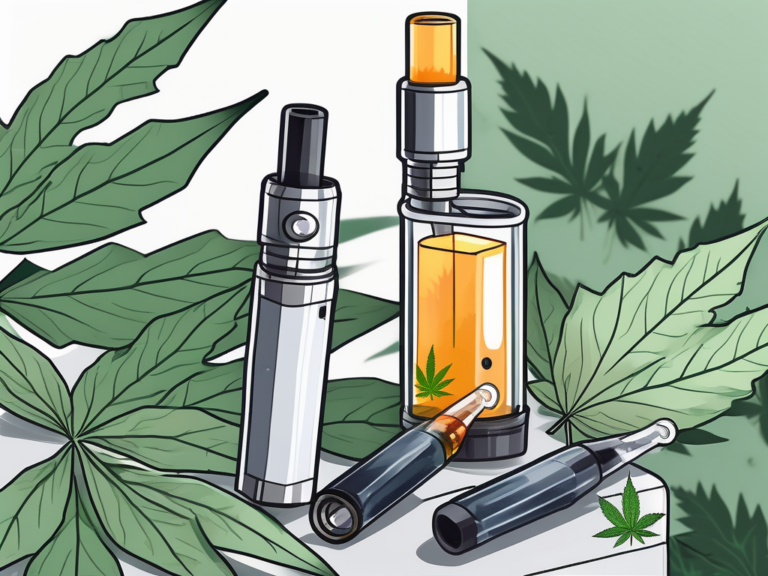how do teens get vapes
Teenagers getting their hands on vaping products has become a prevalent and concerning issue in recent years. It is important to understand the reasons behind this popularity, the mechanics of vaping devices, how teens access these products, the regulations surrounding them, and the health implications associated with vaping. By exploring these topics, we can gain valuable insights into how to address this problem effectively.
Understanding the Popularity of Vaping Among Teens
Vaping has gained significant popularity among teenagers, and there are several reasons for its appeal.
Teenagers are drawn to vaping for various reasons, one of which is the perception that it is a safer alternative to smoking traditional cigarettes. Many teens believe that vaping allows them to experience the sensation of smoking without the harmful effects of tobacco. The sleek and modern design of vaping devices also adds to their allure, appealing to young individuals looking to try something new and trendy.
The Appeal of Vaping
Another aspect that contributes to the appeal of vaping among teens is the wide range of flavors available in e-liquids. From fruity flavors to dessert-inspired ones, the variety allows young users to experiment and find their favorite tastes. This customization aspect of vaping sets it apart from traditional smoking, where options are limited to tobacco or menthol.
The Role of Social Media in Vaping Culture
Social media platforms play a significant role in promoting vaping culture among teens. Influencers and celebrities often endorse vaping products on various platforms, making it appear glamorous and trendy. The visual appeal of vape tricks and cloud chasing videos shared online creates a sense of excitement and curiosity among young viewers, driving them to explore vaping as a form of self-expression.
Furthermore, the online vaping community provides a sense of belonging for teenagers who may feel isolated or misunderstood in other social settings. Through forums, groups, and hashtags, young individuals can connect with like-minded peers, share experiences, and seek advice on different vaping products and techniques. This sense of community fosters a supportive environment for experimentation and exploration, contributing to the growing popularity of vaping among teens.
The Mechanics of Vaping Devices
To comprehend the allure of vaping, it is crucial to understand the different types of vaping devices and how they function.
Delving deeper into the world of vaping devices reveals a fascinating array of options that cater to a wide range of preferences and styles. From sleek and discreet e-cigarettes to customizable vape pens and convenient pod systems, the market is brimming with choices for users to explore. Each type not only differs in design but also in functionality, offering unique features that enhance the overall vaping experience.
Types of Vaping Devices
Vaping devices come in various forms, including e-cigarettes, vape pens, and pod systems. Each type offers different features and customization options, catering to individual preferences. Understanding these device variations allows teenagers to select the device that suits their desired vaping experience.
Furthermore, within each category of vaping devices, there are subcategories that provide even more specialized options for users. For example, vape pens can range from simple, single-button devices to advanced models with adjustable settings and temperature control. This diversity ensures that users can find a device that not only meets their needs but also aligns with their personal style and vaping goals.
How Vaping Devices Work
Vaping devices consist of a heating element, a liquid reservoir (vape juice or e-liquid), and a power source (battery). When a user inhales through the mouthpiece, the heating element vaporizes the liquid, creating an aerosol that the user inhales. This process is known as “vaping.”
Moreover, the technology behind vaping devices continues to evolve, with manufacturers constantly innovating to improve performance and user experience. Advanced features such as temperature control, variable wattage, and airflow adjustments allow users to fine-tune their vaping sessions to suit their preferences. This blend of science and design underscores the intricate mechanics that drive the modern vaping industry, shaping the way users engage with and enjoy their chosen devices.
How Teens Access Vaping Products
Teenagers have various means of obtaining vaping products, often bypassing age restrictions and regulations.
Despite efforts to regulate the sale of vaping products to minors, teenagers continue to find ways to access these items. The allure of vaping, with its trendy appeal and perceived social status, drives many adolescents to seek out these products through unconventional means.
Online Purchasing of Vapes
The internet provides easy access to a wide range of vaping products, making it simple for teens to purchase them discreetly. Online sellers may not always enforce age verification measures strictly, allowing underage individuals to acquire vaping devices and e-liquids.
With the rise of online marketplaces and e-commerce platforms, teenagers can browse through a plethora of vaping options with just a few clicks. The lack of stringent age verification processes on some websites creates a loophole that underage users exploit to get their hands on these products.
Peer-to-Peer Vape Exchange
Another way teens obtain vaping products is through peer-to-peer exchanges. Teenagers often share or sell their devices and e-liquids amongst themselves, circumventing legal distribution channels.
This informal network of vape sharing among peers further complicates efforts to control the access of minors to vaping products. The exchange of devices and e-liquids within social circles not only evades age restrictions but also normalizes the behavior of underage vaping, perpetuating its prevalence among teenagers.
The Legalities and Regulations Surrounding Vaping
Understanding the legal framework and regulations around vaping is essential in combating the access of vaping products by teenagers. Vaping, the act of inhaling and exhaling vapor produced by an electronic cigarette or similar device, has become a popular trend among young people in recent years. This surge in popularity has raised concerns about the potential health risks and addictive nature of vaping, especially for adolescents.
Health experts warn that the long-term effects of vaping are still largely unknown, and the high levels of nicotine in many vaping products can have detrimental effects on brain development in young users. As a result, lawmakers and regulatory bodies have been working to establish clear guidelines and restrictions to protect minors from the dangers of vaping.
Age Restrictions on Vaping
In many jurisdictions, there are age restrictions in place that prohibit the sale of vaping products to individuals under a certain age. However, these regulations are not always effectively enforced, allowing teens to find ways to acquire vaping devices despite the legal restrictions. Online retailers and social media platforms have made it easier for young people to access vaping products, bypassing age verification processes and putting their health at risk.
Additionally, the marketing tactics used by some vaping companies, such as flavored products and sleek designs that appeal to youth, have come under scrutiny for potentially targeting a younger audience. This has prompted calls for stricter regulations on how vaping products are advertised and sold to prevent underage use.
Policies and Penalties for Underage Vaping
Government bodies and educational institutions have implemented policies and penalties to discourage underage vaping. These measures aim to educate young people about the risks associated with vaping and provide support for those who may be struggling with addiction. School-based programs, counseling services, and community outreach initiatives are all part of a comprehensive approach to addressing the issue of underage vaping.
In addition to educational efforts, there are legal consequences for those caught vaping illegally. Fines, community service, and even suspension from school are among the penalties that can be imposed on minors who violate vaping regulations. By raising awareness and implementing consequences, authorities aim to deter teenagers from engaging in this harmful behavior and protect the health and well-being of future generations.
The Health Implications of Vaping
While vaping may be seen as a safer alternative to smoking, it is essential to acknowledge the potential health consequences associated with it.
Vaping has become increasingly popular among individuals of all ages, with a particular surge in use among teenagers and young adults. The sleek designs of vaping devices, the wide array of flavors available, and the misconception of it being a harmless activity have all contributed to its widespread adoption.
Short-Term Effects of Vaping
Vaping can lead to various short-term effects, such as throat and mouth irritation, coughing, and nausea. Additionally, some individuals may experience nicotine addiction, as many vaping liquids contain this addictive substance.
Furthermore, the act of vaping itself can be habit-forming, leading to increased frequency of use and potentially higher exposure to harmful chemicals present in the aerosols produced.
Long-Term Consequences of Vaping
The long-term effects of vaping are still being studied, but initial findings suggest potential risks to lung health. Inhalation of harmful chemicals and the presence of certain heavy metals in aerosols produced by vaping devices may contribute to respiratory issues over time.
Moreover, the impact of secondhand vaping, where non-users are exposed to the aerosols exhaled by vapers, is an area of concern that warrants further investigation. Studies have shown that bystanders can inhale nicotine and other toxins from these exhaled aerosols, raising questions about the broader public health implications of vaping.
In conclusion, understanding how teens access vapes is crucial in addressing the rising popularity of vaping among young individuals. By examining the reasons behind its appeal, the mechanics of vaping devices, how these products are obtained, the legalities and regulations surrounding their sale, and the potential health implications, we can work towards mitigating this issue effectively. It is imperative for communities, educational institutions, and policymakers to collaborate in implementing strategies that discourage underage vaping and promote healthier alternatives for teenagers.






